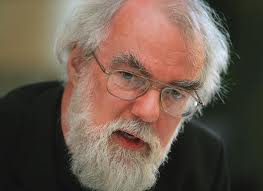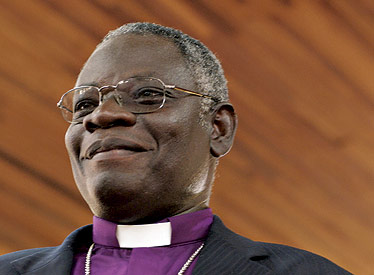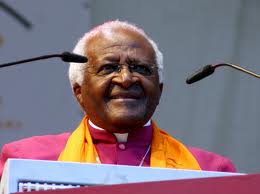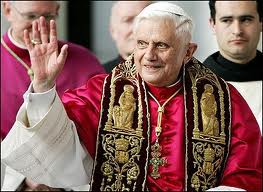by Elissa Lerner
After so much fanfare surrounding the surprise election of Archbishop Timothy Dolan to the presidency of the U.S. Conference of Catholic Bishops (USCCB) this past fall, or even the Pope’s recent blessing of Facebook, perhaps the greatest shock in the Catholic world is the near silence regarding the three bishops, seven priests, and three hundred members of six congregations that have become ordained and opted into new Ordinariates – subsections of the Catholic Church for disaffected Anglicans. These conversions, all occurring in England in the past few weeks, are directly in response to the Anglican Church’s move to ordain women priests.
Sound familiar?
That’s because a little more than a year ago, the Catholic Church specifically invited disaffected Anglicans to move, causing shockwaves at least through the Internet, if not the world. At the time, few could decipher what the invitation entailed. The October 20, 2009 move was generally thought to address the concerns of conservative Anglicans who oppose the increasing acceptance of the ordination of women and open homosexuals to the priesthood and episcopate. Both issues have caused splintering within the Anglican Communion and debates within the Catholic Church. Yet now that some appear to be welcoming the option, no one seems to care.
One reason may be simply that tectonic shifts in Catholic-Anglican relations in England and the United States are simply no longer part of the bigger picture. While many commentators found the election of Dolan to be a signal that the Catholic Church wanted to regain its voice in the culture wars, few considered that those culture wars may be on another continent. After all, despite this alleged right-wing move within the American Catholic Church, the pope nevertheless acknowledged just days later that in situations of disease prevention, like AIDS, condoms could be considered. Nowhere are the issues of women and homosexuals, not to mention condom distribution for HIV prevention, more pressing than in the greatest demographic growth region for both churches: Africa.
There are approximately 80 million Anglicans worldwide. John Allen Jr., a specialist on Catholic affairs, wrote in The National Catholic Reporter that if even half of the worldwide Anglican Communion “were to wake up tomorrow and decide to join the Catholic Church, all of them together wouldn’t even represent one of the ten largest Catholic nations on earth.” Since Africa is home to the clear majority of them, particularly Nigeria and Uganda, Allen wrote, “The future of Anglican/Catholic relations may well lie more in Africa than in Rome or Canterbury.”
Anglicanism takes a different shape outside of the Anglo-American world. The divide between Anglicanism and Catholicism is much sharper in Africa. The Rev. Canon J. Robert Wright of the General Theological Seminary of the Episcopal Church refers to Africa as a “battleground” for both the Catholic and Anglican churches. As the official historiographer of the Episcopal Church, he speculates that perhaps the extremely traditional and conservative gender bias in Africa motivates a subtle appeal to African Anglicans through the invitation.
Rev. George Brandt, rector of Saint Michael’s Church in New York, served three years around Africa and speaks to the subtleties in religious life there. He points out that the idea of Roman Catholic clerical celibacy “flies in the face” of cultural norms, with huge scandals surrounding Catholic clergy taking concubines, marrying illegitimately, and abusing nuns. All this makes it difficult to maintain celibacy, and may be part of the appeal of the Vatican’s invitation and its qualified acceptance of married clergy.
But there are far bigger issues surrounding Christianity in Africa, such as the tribal nature of religious affiliation. Brandt said, “If you’re a member of a certain tribe and you become a Christian, you become an Anglican. If you’re a member of another tribe and you become a Christian, you become a Roman Catholic. And the two don’t get along. So that’s another reality. Africa reflects to this day the 19th century colonial activity of European churches.”
That colonial activity is a lengthy and convoluted history of multiple evangelizing groups that divvied up countries and tribes throughout Africa. Brandt is adamant that “you can’t understand why Africa is the way it is unless you understand those differences.” In his view, it’s the only way to make sense of a clergy as politically diverse as Desmond Tutu (former Anglican archbishop of South Africa) and Peter Akinola (current Anglican Primate of Nigeria). But while Brandt sees the Roman Catholic Church as aware of the subtleties of the African context, he doesn’t think that context factors into the invitation at all.
“This was a way that Rome thought it could give itself a booster shot in the United States. There are all these so-called dissident Anglican priests who could help fill out all the holes in the most vibrant part of the Roman church – which is the American church. There are almost 50 million Roman Catholics and an acute shortage of clergy. And Anglicans in this country have more priests than we have places to put ‘em.” Brandt said.
The procedure for Anglican parishes to join the Catholic Church was formally introduced in November, 2009 as Anglicanorum Coetibus, an apostolic constitution — the highest level of papal decree. It outlines the manner in which Anglican parishes can become Personal Ordinariates, effectively shadow parishes within a Catholic diocese. Married Anglican priests must be reviewed and re-ordained as Catholic priests. Unmarried priests must remain celibate, and those “impeded by irregularities or other impediments” may not enter the Catholic clergy. Other provisions allow for the creation of Anglican-styled seminaries under the Catholic auspices, and the preservation of Anglican liturgy, such as portions of the Book of Common Prayer.
The substance of the constitution is hardly radical. Individual Anglicans have converted to Catholicism for centuries, and the new document itself seems to be a modified version of the Pastoral Provision of 1980. Certain Episcopal parishes, notably in Texas, had requested full communion with the Catholic Church in reaction to the ordination of female Episcopal priests in 1974. As guardian of doctrinal integrity, the Catholic Congregation of the Doctrine of Faith admitted these parishes while preserving much of their Anglican liturgy and re-ordaining previously married priests on a case-by-case basis. So, what makes Anglicanorum Coetibus different?
One possibility is that the Personal Ordinariates might be an opportunity to bring over a larger number of married priests to see how both the individual parishes and the Catholic Church handle it. As Brandt pointed out, the Catholic Church is suffering a severe shortage of priests, whereas the Anglican Communion has too many. Many believe that the Church needs to start thinking creatively about how to solve this issue, and the solution may be found in a reimagining of gender and sexuality within the Church.
While there have been married priests re-ordained in the Roman Catholic Church, this constitution provides a corporate version of that shift. Though Brandt views that nuance as “no big deal,” Rev. Kathleen Liles, the first female rector of Christ and St. Stephen’s Church in New York, wonders if, as more married Anglican priests became re-ordained in the Catholic Church, “the Roman tradition can sort of test drive [married clergy].”
She then expanded with an unusual take: “Rome is going to fall off the fence either by ordaining women—which will be a theological innovation from their point of view—or they’re going to have to lift the celibacy for men.”
In her view, the clerical crisis presents a catch-22 for the Catholic Church. “If they ordain women, that’s harder for them theologically but easier for them economically,” she says. “But if they decide to lift the celibacy requirement, it’s easier theologically but more difficult economically because they’re going to have to support the priest and the priest’s family. They’re really sort of in a bind.”
Rev. Caroline Stacey, the English-born rector of St. Luke in the Fields in New York, also recognizes this dilemma between doctrine and economics. However, she does not think that it’s a balanced fight. “[Rome] doesn’t want to even discuss the ordination of women,” she said. “In a sense they’ve already made that decision because from time to time they accepted men who were already married and by doing that they’ve set a precedent. The issue of marriage is much less threatening to the Roman understanding of priestly authority than women,” she explained.
“I think sexuality is tremendously at the core of authority issues,” Dr. Julie Byrne, Chair of Catholic Studies at Hofstra University, says regarding the motivations and controversies surrounding the Catholic Church’s invitation last year. However, she believes that authority itself is the problem. She guesses that the move might be “one more way on the part of Benedict XVI to say, it’s okay if the Church gets smaller, it’s more important for the Church to have the right kind of membership than it is to include everybody.”
Deciding who is to be in this “right membership” is ambiguous territory. Although the invitation is directed toward conservative Anglicans who prefer women and gays out of their clergy, those very same conservatives are often the most evangelical of Anglicans – meaning, those least likely to want to submit to the authority of the pope.
The Anglican Communion encompasses a wide range of traditions that can tilt all the way from the “high church” side, also known as “Anglo-Catholic,” to the “low church” side, known as evangelical Anglicans, that bear much more resemblance to the Protestant evangelical model of loose church affiliation. The disaffected conservative Anglicans addressed by this invitation reside across this spectrum. This spectrum makes conversion less likely. Liles explains, “In North America, most of the disaffected people won’t go to Rome, they’ll just go to their own Anglican provinces.”
“[The invitation] will undoubtedly affect England more than us,” Liles said. “When we voted to open the ordained ministry to women, that included the episcopacy. In England they did not. So England has two battles to fight. Our front has to do with sexuality. They have the gender and the sexuality. But gender is even bigger there—they’ve not really pushed the envelope of sexuality the way we have,” she said.
Perhaps one reason why “sexuality,” which tends to mean the ordination of gay bishops, is not as important in England is because their presence in the Anglican ranks is essentially an open secret. Brandt, who is gay, was at a clergy conference for the two cities of London and Westminster, England, a few years ago. There, he was amazed to find that “more than half of the men and women” were in partnered relationships. He remembered, “They weren’t gay clergy acting out being gay, they were gay clergy – in partnered relationships! And in full knowledge of this, the English bishops are acting like these are exceptions.”
However, Archbishop Rowan Williams has recognized the internal tension within the Communion over issues of gender and sexuality. At the 2009 General Convention, Williams mentioned the possibility of “two-track Anglicanism.” Stacey finds this position inherently weak, especially in light of the Vatican’s tempting offer for conservative Anglicans. She said it reflects “[Williams’] refusal to serve as the prophetic voice of ordaining gay and lesbian people in addressing that issue simply as an issue of the Gospel and how God calls people rather than an issue of process.”
On the other hand, she acknowledges Williams’ attempt to hold the progressive and conservative streams of Anglicanism together – not just in England and the United States, but in Africa as well.
For an institution that counts its age not in years, but in centuries, so many surprising decisions within one year may appear shortsighted. As Wright pointed out, “They [the Catholic Church] don’t make many mistakes.” But with the back-to-back events of the appointment of Dolan and the tentative permission of condom use put into the context of the appeal to conservative Anglicans and the demographic battleground that Africa is and remains poised to be, a blurry picture may come ever so slightly into focus.
Despite all of the ecclesiastical blunders, the highest goal of both churches largely remains the pursuit of full unity – the idea of the reintegration of the Anglican and Catholic churches.
“It would be regrettable if we gave up the dream of full unity. It’s not just a desire, it’s a command,” Liles said.
Elissa Lerner is a freelance journalist and playwright. She is an M.A. candidate and the 2009 Goren Fellow in Religious Studies and Journalism at the Arthur L. Carter Journalism Institute at NYU and a contributor to The Revealer.




